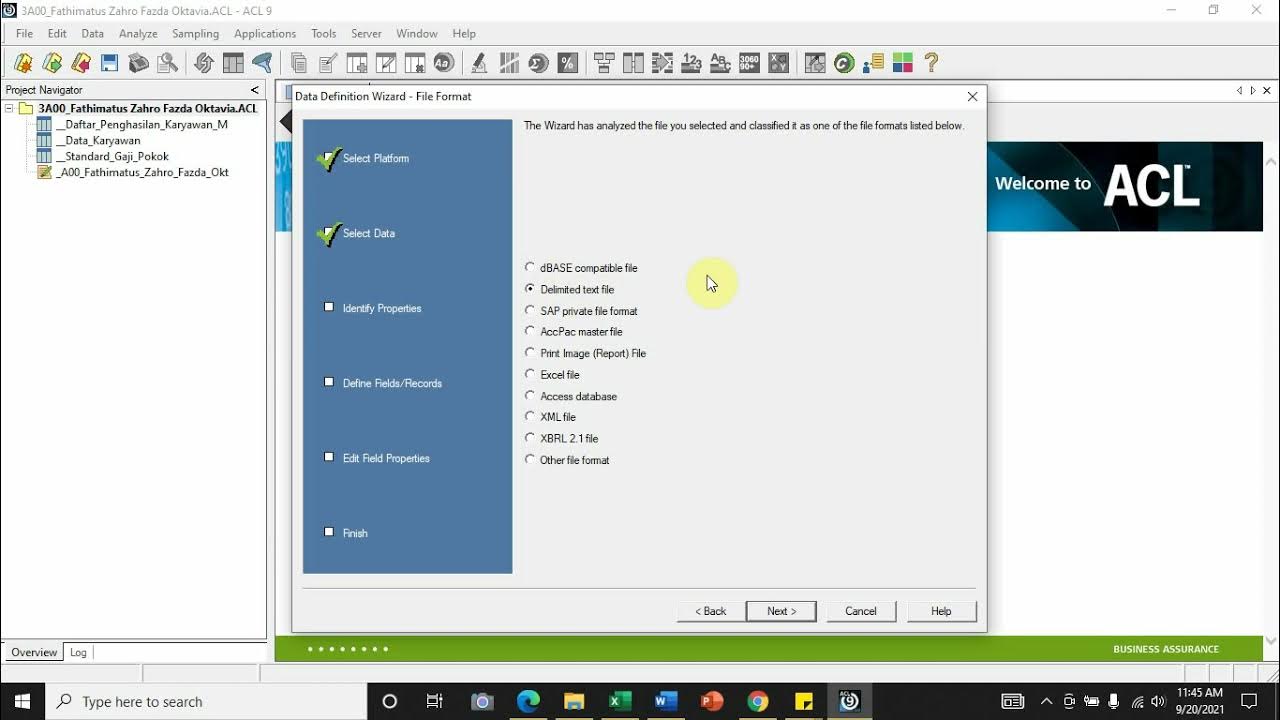PENJELASAN SIMPLE SCD TIPE 2, MENGGUNAKAN PENTAHO & H2 Database
Summary
TLDRThis tutorial explains how to perform data transformations using Pentaho Data Integration (PDI), focusing on the steps to connect to a database, import CSV files, and update dimension tables. It details how to set up the transformation process, configure updates for changed data, and track history using versioning. The example uses a student report system to demonstrate how to handle grade changes and ensure data integrity. Key steps include setting up data connections, selecting transformation fields, and executing SQL commands to update and track data changes effectively.
Takeaways
- 😀 The script demonstrates the steps of performing business intelligence tasks using Pentaho Data Integration.
- 😀 The first step involves selecting the file transformation menu to initiate the process.
- 😀 The data input for the transformation process is taken from a CSV file, which is loaded using the 'CSV file input' option.
- 😀 After selecting the input file, the system checks for the data types (such as integer and string) using a preview function.
- 😀 The script explains the use of a data warehouse, including the addition of dimension fields and handling updates automatically when data changes.
- 😀 To connect to the database, the script uses a new H2O connection, specifying necessary credentials such as localhost and the business database.
- 😀 The target schema and table are set to 'public', and a new dimension table is created for processing data.
- 😀 The data fields, such as student grades, are mapped to the correct dimension fields, and the type of dimension update is set to 'SCD Type 2' for handling historical data.
- 😀 The script includes an SQL execution step to apply the transformations and updates to the data.
- 😀 After the transformation, the results are reviewed to confirm that changes to student grades are accurately captured, and the data is updated correctly.
- 😀 The script also includes versioning, showing how changes to data are tracked, and provides insights into before-and-after data transformations.
Q & A
What is the primary goal of the tutorial in the script?
-The primary goal of the tutorial is to demonstrate how to use Pentaho Data Integration (PDI) for managing student grade data, particularly focusing on updating and tracking changes using Slowly Changing Dimension (SCD) Type 2.
What tool does the speaker use for this data transformation?
-The speaker uses Pentaho Data Integration (PDI), specifically the 'transformation' functionality, to load, update, and track changes in student grades data.
What is the significance of using SCD Type 2 in this process?
-SCD Type 2 is used to track historical changes in data. In this case, it allows for storing multiple versions of a student's grade, so both the old and new values can be preserved, providing a history of grade updates.
What kind of database connection is being used in the tutorial?
-The tutorial uses an H2O database connection to store and manage the transformed data.
What is the purpose of the 'CSV Input' component in PDI?
-The 'CSV Input' component in PDI is used to load data from a CSV file into the transformation process, allowing the user to work with the student grades data.
How does the speaker ensure the correct data is loaded for transformation?
-The speaker checks the data types and previews the data to ensure everything is correct before proceeding with the transformation. They also use the 'Get File' feature to inspect the data.
What happens when the speaker updates a student's grade from 75 to 100?
-When the grade is updated from 75 to 100, the transformation process tracks both the old and new values as part of the historical data using SCD Type 2, so the data's history is preserved.
What is the role of the 'Dimension Update' step in the transformation?
-The 'Dimension Update' step is used to update the dimension table in the data warehouse, ensuring that changes in the data, like updated student grades, are reflected in the database while preserving historical records.
Why is the target schema and table important in the transformation process?
-The target schema and table are crucial because they define where the transformed data will be stored. In this case, the speaker ensures that the 'Dim KYT' table is set as the target for the data.
How does the speaker verify that the transformation was successful?
-The speaker verifies the success of the transformation by previewing the data in the H2O database, checking that the expected changes, such as the updated grades, are correctly reflected in the database and historical records.
Outlines

Этот раздел доступен только подписчикам платных тарифов. Пожалуйста, перейдите на платный тариф для доступа.
Перейти на платный тарифMindmap

Этот раздел доступен только подписчикам платных тарифов. Пожалуйста, перейдите на платный тариф для доступа.
Перейти на платный тарифKeywords

Этот раздел доступен только подписчикам платных тарифов. Пожалуйста, перейдите на платный тариф для доступа.
Перейти на платный тарифHighlights

Этот раздел доступен только подписчикам платных тарифов. Пожалуйста, перейдите на платный тариф для доступа.
Перейти на платный тарифTranscripts

Этот раздел доступен только подписчикам платных тарифов. Пожалуйста, перейдите на платный тариф для доступа.
Перейти на платный тарифПосмотреть больше похожих видео

How to create Geological Database in Surpac (Step-by-Step)

Oracle Database Tutorial 56:Data Pump impdp table and Duplicate (Remap_table ) table

[Import File] - Comma Separated Values (.csv) ke Dalam Aplikasi Audit Command Language (ACL)

Cursus Excel 2010 Deel 9: Draaitabellen maken in Excel

Python Pandas Tutorial 4: Read Write Excel CSV File

Curso MySQL #08 - Gerenciando Cópias de Segurança MySQL
5.0 / 5 (0 votes)
